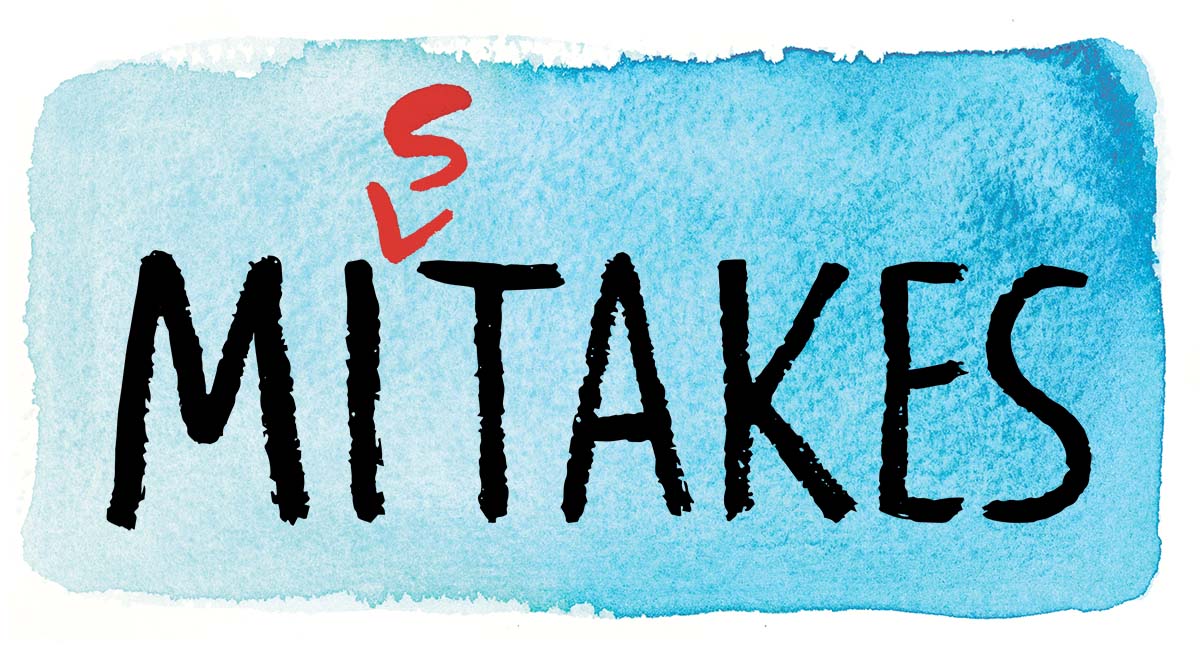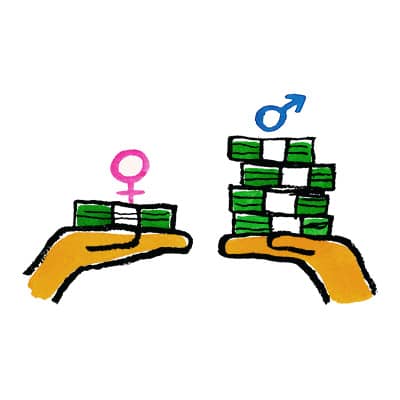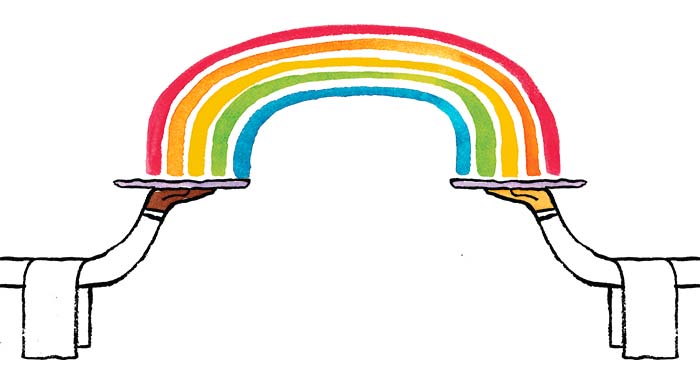
After decades of shady hiring practices and biased recruitment processes, diversity recruiting trends in 2022 are about less talk, more walk.
And yet, despite 69% of employers reporting that they have a diversity, equity and inclusion (DEI) program with clearly defined goals, a recent survey by JUST Capital found that 1 in 4 employees are doubtful about progress made in this area.
Real examples of diversity in the workplace start with recruitment. If you’re committed to making real progress on those “clearly defined goals,” and on creating a diverse workforce, you’re going to need a practical, measurable diversity recruiting strategy to help move your company from blanket statement to proven action.
Of course, as with all things hiring, it’s not as easy as it sounds. Let’s dive into some of the most common (yet deadly!) diversity recruiting mistakes so you can sidestep the hurdles and harness all the benefits of a diverse and inclusive workforce.
Table of contents
- What is diversity recruiting?
- What is a diversity recruiting strategy?
- Mistake #1. Failure to move from DEI policy to action
- Mistake #2. Not knowing how to track your progress
- Mistake #3. Getting stuck in a cycle of inconsistent hiring practices
- Mistake #4. Making a biased offer
- Mistake #5. Forgetting that we're talking about people
- Mistake #6. Underestimating your role as an employer
What is diversity recruiting? (Hint: Not a tick-box exercise)
Diversity recruiting is the process of welcoming individuals from all backgrounds and identities into the applicant pool so that an employer can choose the best possible candidate from a cohort of talent that is representative of the available workforce.
In diversity recruiting, recruiters and hiring managers aim to reduce bias and provide equal access to individuals with relevant skills and experience to the job description – regardless of race, gender, ethnicity, sexual orientation, changing pronouns or any other manner in which an individual might identify.
We want to stress that despite the many misconceptions, the goal of diversity recruiting is not to force a quota or cut corners on skills and experience. It’s about creating an innovative culture that encourages performance, unique perspectives and diversity of thought, regardless of background.
And guess what? The benefits of diversity recruiting speak for themselves:
- A report by McKinsey found that companies in the top quartile for gender diversity in their executive teams were 25% more likely to have above-average profitability than companies in the fourth quartile.
- Research from Gartner found that 75% of organizations with an inclusive frontline team will exceed financial targets.
- A survey by decision-making platform Cleverpop found that inclusive teams make better business decisions up to 87% of the time at 2X the speed, with half as many meetings.
Increased profits. Better decisions in half the time. Knocking your financial targets out of the park. These are just some of the proven outcomes that make a clear case for a diverse and inclusive culture.
But at the end of the day, it’s not enough to know diversity recruiting matters. If you want tangible progress in your diversity efforts, you’ll need a clear strategy during your hiring process to help keep you on track.
What is a diversity recruiting strategy?
A solid strategy is the bedrock of any successful DEI program. So what is it exactly?
A diversity recruiting strategy is a combination of a clear set of goals, backed up by a defined set of metrics, plus all the systems and processes a company uses to ensure its recruitment process is fair and free of bias.
But keep in mind, DEI is a long game. To know how much traction you are (or aren’t) making, it’s crucial for hiring managers and teams to get clear on:
- Company diversity goals. How do you define diversity at your company? What parts of the company are missing out on diverse perspectives? Are specific demographics overrepresented?
- The diversity recruiting process. How many existing employees and job seekers in the candidate pool are from historically underrepresented backgrounds? Which job listings get the most candidates from diverse backgrounds? Which roles get the least?
- The progress metrics. How do you measure the success of your DEI efforts? Do you look at the number of different perspectives? Or just representation?
These recruitment data points will serve as a benchmark for any company that wants to go beyond the talking points to truly embody diversity as a core tenet of their employer brand.
But even with the best-laid plans, hiring and keeping candidates from diverse backgrounds is tougher than it sounds. If you’re not careful, it’s easy to let common mistakes stand in the way.
The 6 diversity recruiting mistakes that could be holding you back
If you're committed to doing diversity recruiting right, start by taking a closer look at what you might be doing wrong. Here are six critical mistakes even the best-intentioned hiring teams have been known to make.

Mistake #1. Failure to move from DEI policy to action
If we’ve learned anything about DEI implementation in the past few years, it’s that diversity recruiting does NOT stop at policy change.
Unfortunately, it seems many companies still haven’t gotten the memo.
A 2020 survey by Josh Bersin reported that about 80% of companies are simply going through the motions without actually holding themselves accountable to the results of their DEI efforts.
Worse, 75% of the surveyed companies treat DEI as a compliance issue and don’t even bother to mention diversity in leadership development or the company’s overarching learning and development (L&D) strategy. An approach like that might’ve flown under the radar 30 years ago, but in the 2020s, that’s just…bad. 😬
The big question is, what can and should you do about it?
Focus on implementation
Clearly, it’s time to shift from star-studded social media posts to actual accountability. Take a cue from Inclusive Workplace Wellness Advocate Vivian Acquah who said:
“One of the first ‘ugly’ elements [of the DEI movement] is that there is still too much performative action by companies and individuals alike. Instead of being held accountable to do the real work of DEI, people seem to favor social-media posts that are on-trend.”
Distraction scrolling is fine when you’re taking a quick break from a long workday — but when it comes to implementing your DEI strategy employees want receipts, not likes.
Here are a few practical tips to help you fast-track DEI policy implementation:
- Talk to your employees. If you really want to know what needs to change, employee and candidate surveys can be a goldmine for unearthing insights that can transform your entire approach to diversity recruiting.
- Review your job postings for any language that might be a turn-off for candidates from certain underrepresented groups.
- Educate team members at every level of the company on why representation is important for all parts of the business.

Mistake #2. Not knowing how to track your progress
The insidious power of hiring bias is that it works in the background — most of us don’t even know it’s there. So it makes sense that most organizations don’t know how to measure their bias-fighting wins either.
That’s a problem. Because real diversity isn’t about how many women are in the marketing department. It’s about your progress at every level throughout the company.
Greg Fontus, Lead DEI Consultant at Proactive Talent says it best:
“They [Candidates] want to see DEI as something that isn’t performative, and instead embedded as a core value throughout the organization. No longer can companies go through a hiring cycle without showcasing the importance of diversity to candidates. We know it’s a big deal to have one more thing to track within your company but doing the work upfront makes DEI policy implementation much more easy.”
Consistently track your DEI data
“Companies should track and measure inclusive hiring practices more systematically. Often, we focus on one element at one point in time — like ensuring that key DEI questions are asked in the initial candidate application form,” explains Ethan Salathiel, former Co-Founder & Executive Coach at Bound Coaching and Behavioral Change.
“This provides data to show that X% of candidates identified as Y, so the organization can report they’re recruiting from a diverse pool of people. However, what happens to the successful candidates after they’re onboarded?”
In a time when 50% of LGBT workers still don’t feel comfortable enough to come out to their supervisor, the companies that win with diversity recruiting will be those that track their progress before, during and after the recruitment process.
Here are some of the top questions to ask (and keep asking):
- What teams or departments are the most diverse? And the least? Why? Why not?
- What can you do to increase diverse perspectives on every team within the company?
- How long does it take for diverse team members to gain a promotion? How does this amount of time compare to the time it takes for less-diverse team members to get promoted?

Mistake #3. Getting stuck in a cycle of inconsistent hiring practices
As much as diversity recruiting requires a certain level of flexibility, it’s still important to have a process in place.
Your recruitment process will set the baseline for all members of your hiring team and help keep everyone in check when it comes to eliminating bias. While it can certainly be tough to keep team members on the same page, the good news is the right HR tech stack can help.
Whether you’re hiring remotely or locally, there is no shortage of cloud-based recruiting tools that can help level up your current process.
Just make sure the tools and platforms you use have the features you need to create a welcoming experience for candidates — self-scheduling options, structured interview guides, access to diversity job boards, and EEOC compliance are just some of the key functionalities you’ll want to look for.
Leverage the right hiring tech
- Apps like Textio and tools like HackerRank, Bryq and Criteria can help you root out bias and create representative talent pools and teams by screening the right people in (instead of merely weeding the "wrong" ones out).
- Diversity job boards give you access to candidates from all over the world and instantly import them straight into your candidate pipeline.
- With a streamlined and AI-free applicant tracking system, you can centralize incoming applicants, automate blind hiring, screen candidates with clearly defined scorecards, and create structured interview guides to make sure all candidates get asked the same questions.

Mistake #4. Making a biased offer
Basing pay on things like gender or race (or unconscious bias) is wrong. So wrong. And if anyone ever pressures you to waver on this point, gently remind them that lawsuits are expensive.
At the end of the day, every candidate deserves to be compensated based on the value they bring to your business. While it may be tempting to offer a salary you know the candidate will accept rather than what the job is really worth, to protect your company (and safeguard your personal karma), you should never go that route and always provide a fair offer.
Simple things like starting compensation conversations early and stating your offer up front will help clarify expectations on both sides and determine if it’s a good match from the get-go. Another surefire way to help candidates know that your offer is fair is to commit to salary transparency.
Eliminate bias with salary transparency
Talking about salary used to be taboo in the workplace, but more and more employees are sharing what they earn, whether the numbers are good or bad.
When you’re transparent, candidates will:
- See that you offer fair, equal pay
- Know that you offer a clear path for growth
Here are a few other things to consider before making your offer:
- If you can’t pay more, consider other perks like a flexible work schedule or other key benefits.
- Don’t ask candidates about previous salary history — especially if your company is based in a state with the salary history ban.
Finally, take a look at the Labor and Employment Law blog for the latest US equal pay laws and guidelines. And always, always check with your legal team if you have any doubts.

Mistake #5. Forgetting that we're talking about people
We’ve said it before, we’ll say it again:
Diversity without equity, inclusion, and belonging is a waste of time.
It’s great that many employers are making efforts to revamp their recruitment branding, but it’s all for naught if the individual you hire quits a couple months in due to cultural issues.
If you already have a diversity recruitment policy or strategy, it's time to sit down and get clear on what inclusion looks like at your organization.
Define what the ‘E, I & B’ mean to you
Rachel Hammerton, Director of Recruitment at Spark Lifecare, sees diversity, equity, inclusion and belonging as an ongoing process.
Here are some ways Rachel suggests employers can place inclusion at the forefront:
- Provide DEI training to all staff
- Set specific DEI outcomes to strive for
- Gather monthly or quarterly reports on DEI efforts
- Execute regular staff and community surveys regarding your initiatives
Remember, a strong investment in inclusion and a sense of belonging will make diversity recruiting way easier in the long-term, as your current employees start to spread the news about your awesome culture.
And that's where the real magic happens. 💖

Mistake #6. Underestimating your role as an employer
For decades, leaders across industries have used the pipeline myth as an excuse for failing to show up with DEI. Porter Braswell, co-founder and CEO of Jopwell has got the inside scoop on the so-called pipeline problem.
“It’s not a pipeline challenge,” Porter says in the podcast The New Way We Work: Debunking the Pipeline Problem: “The talent has always existed. It’s just been a matter of how do you get access to that talent and how do you authentically connect and engage with that talent.”
The second issue closely related to the supposed “pipeline problem” is that when companies find diverse talent, many tend to be narrowly focused on criteria like years of experience and specific skillsets. This rigidity in requirements can deny access to individuals from diverse backgrounds.
So what can companies do instead?
Treat the pipeline myth like a non-issue
If you’re worried about finding the right candidate, it may be time to expand your view of what the ‘perfect’ candidate means.
As Jenni Stone, HR Representative at Bausch + Lomb shared with us:
“While you should never compromise on the level of talent you recruit and hire, you can open yourself to more diversity when you are honest about the traits and qualifications that are must-haves.”
Experts like Porter and Jenni recommend that employers should:
- Have a clear answer for their big ‘Why’ for increasing diversity.
- Dig into their talent acquisition funnels and ask the hard questions.
- Be honest about what skills are must-haves, what are the nice-to-haves and what can be learned on the job.
- Make connections with affinity groups to broaden their recruitment network.
Diversity recruiting is the means, not the end
If you've ever had even an inkling of doubt about your company's diversity and inclusion policy, now's the time to set it right.
Sit down with your team and take the time to lovingly (but firmly) educate them on why this is important. And brace yourself. Real change takes time.
Come prepared with evidence such as numbers, case studies and tangible suggestions to help make diversity recruiting a clear no-brainer for everyone on your team. Before you know it, you’ll have an innovative workforce that reflects the modern consumer and talent market and knows 100% that they’re right where they belong.





